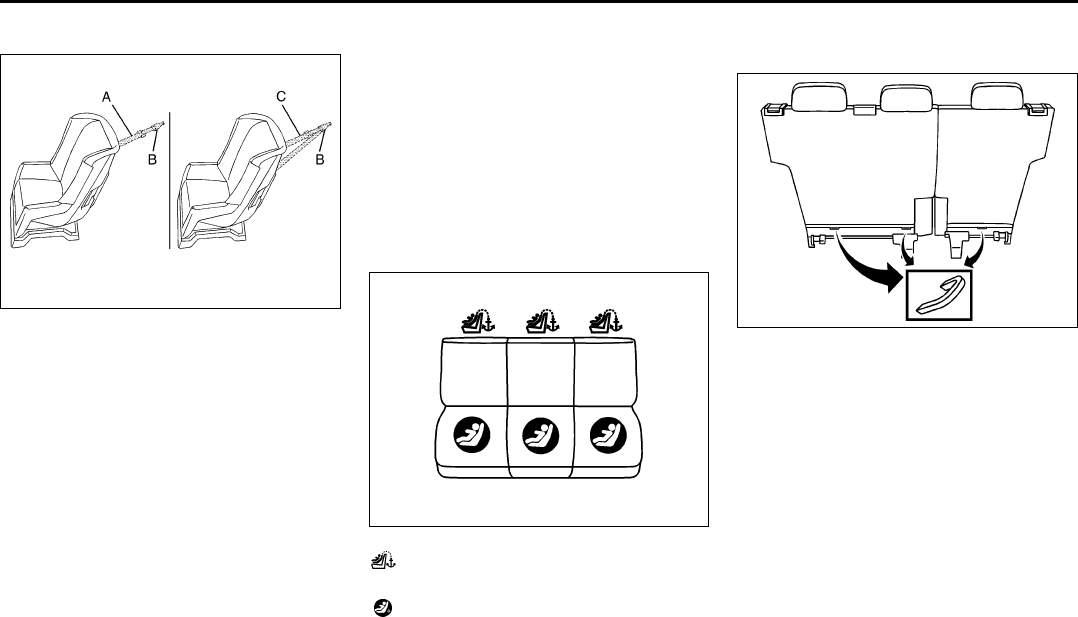
1-27
SEATS AND RESTRAINT SYSTEMS
78J00-03E
Top Tether Anchor
1550581
A top tether (A, C) anchors the top of the
child restraint to the vehicle. A top tether
anchor is built into the vehicle. The top
tether attachment (B) on the child restraint
connects to the top tether anchor in the
vehicle in order to reduce the forward
movement and rotation of the child
restraint during driving or in a crash.
Your child restraint may have a single
tether (A) or a dual tether (C). Either will
have a single attachment (B) to secure the
top tether to the anchor.
Some child restraints that have a top tether
are designed for use with or without the top
tether being attached. Others require the
top tether always to be attached. In Can-
ada, the law requires that forward-facing
child restraints have a top tether, and that
the tether be attached. In the United
States, some child restraints also have a
top tether. Be sure to read and follow the
instructions for your child restraint.
If the child restraint does not have a top
tether, one can be obtained, in kit form, for
many child restraints. Ask the child
restraint manufacturer whether or not a kit
is available.
Lower Anchor and -Top Tether Anchor
Locations
Second Row Seat
1552146
(Top Tether Anchor):
Seating positions with top tether anchors.
(Lower Anchor):
Seating positions with two lower anchors.
Each second row seating position has
exposed metal anchors located in the
crease between the seatback and the seat
cushion.
1708261
The top tether anchors for each second
row seating position are located on the
base of the seatback. Be sure to use an
anchor located on the same side of the
vehicle as the seating position where the
child restraint will be placed.
Do not secure a child restraint in the right
front passenger’s position or the third row,
if a national or local law requires that the
top tether be attached, or if the instructions
that come with the child restraint say that
the top tether must be attached. There is
no place to attach the top tether in this
position.
Accident statistics show that children are
safer if they are restrained in the rear
rather than the front seat. Refer to “Where


















